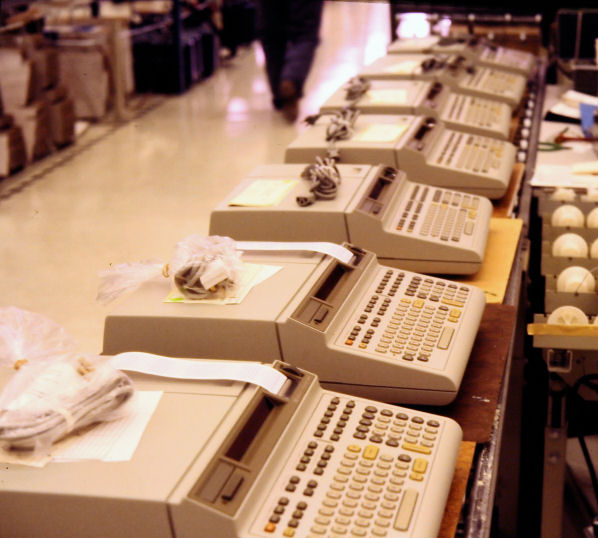|
Showtime: The Third-Generation Desktop Computers
The first-generation HP 9100A established the market for programmable scientific calculators and broke the ice for automated instrument control. The second-generation machines—the HP 9810, 9820, and 9830—segmented and grew these markets. By 1972, when HP introduced the HP 9820 and 9830, the company knew that it had established a major new product category. The Loveland Calculator Division started planning for the next generation.
The Loveland engineers understood that the success they had already achieved in the market would attract competitors. In true HP fashion (for that era), they intended to fight these expected competitors with huge technological leaps that would place substantial barriers in the way of any company that tried to challenge HP in the desktop-computing and instrument-control arenas.
The Loveland Calculator Division planned to make numerous technological breakthroughs across a wide front, thus placing as many obstacles in the way of competitors as possible. At the top of the list for technological leaps was the advancement of the in-house NMOS IC fabrication process that produced the 4Kbit ROMs used to store operating systems and language compilers in the second-generation calculators.
The next version of NMOS would not only supply bigger ROMs but logic chips as well, starting with an integrated 16-bit microprocessor based on the HP 211x architecture to replace the 4-board serialized processor that Chuck Near had developed for the second-generation machines. This NMOS process would also produce logic devices such as a keyboard/display/printer controller for the HP 9825, a tape controller chip for the HP 9845, and a small logic-oriented processor dubbed the “nanoprocessor” that would be used as a floppy-disk controller in the HP 9885M and as a controller in the HP 98034A HPIB interface card for the new desktop machines.
Also to be replaced was the digital version of the Philips tape-cassette drive used in the second-generation HP 9830 and later in the HP 9821. Like the magnetic-card reader that preceded it, the cassette-tape drive was too slow and lacked sufficient storage capacity for the third generation. The new machines needed something bigger, better, faster. Development of a replacement storage peripheral would turn out to be a much bigger task than planned.
Programming languages also had to evolve for the new generation. With more ROM capacity available, the software teams at the Loveland Calculator Division started to develop language extensions to provide desktop computer users with more capabilities to take on even tougher tasks.
Many other new technologies were also needed for HP’s third-generation desktop machines: new displays, new printing technology, bigger power supplies, and an entirely new I/O structure that could support higher data rates. To develop all of these new technologies and more, the Loveland Calculator Division’s R&D engineering team grew substantially. By 1975, it had passed 100 people.
It’s not possible for me to tell all of their stories, but I’ll do the best that I can to recall those exciting days.
|

|
|
HP 9825A assembly line.
Photo courtesy of Fred Wenninger
|
|
|